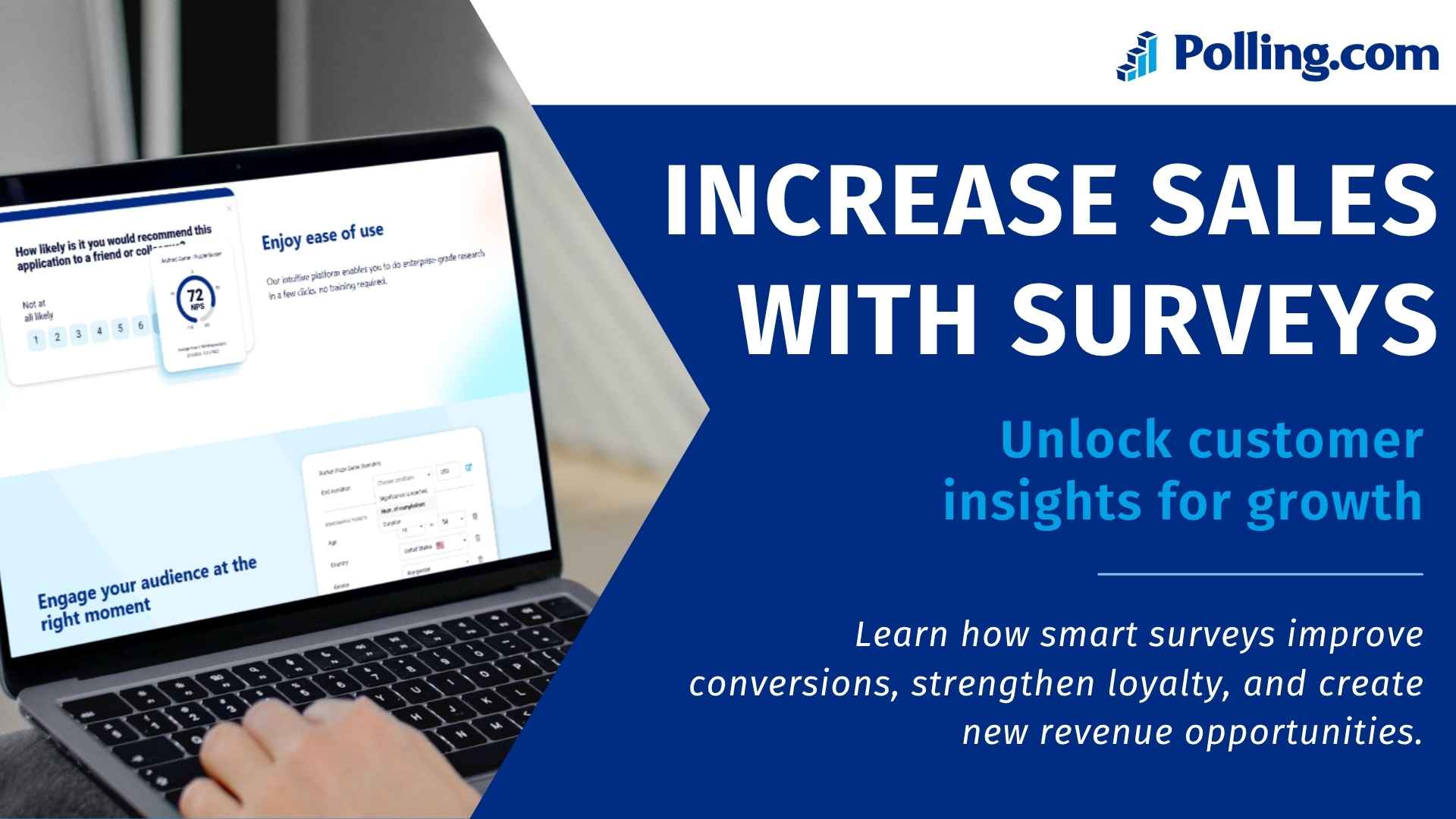
How Surveys Can Drive More Sales for Your Business
Many businesses ask the same question when sales stay flat despite great products and good marketing do surveys increase sales? The answer is yes. When used correctly, surveys help businesses improve customer engagement, conversions, and long-term revenue.
So, what’s missing?
A surprisingly effective strategy often goes unnoticed: do surveys increase sales?
The answer is yes. When used with purpose, surveys do more than collect feedback. They create customer engagement, reveal opportunities, and help optimize every part of your sales process.
Let’s begin by understanding how surveys affect customer psychology.
The Psychology Behind Why Surveys Drive Sales
Surveys can be powerful tools not only for collecting information, but also for influencing customer behavior. When done right, they help shape buying decisions.
The Question Behavior Effect (QBE)
One well-known principle behind survey success is the Question Behavior Effect. This concept shows that asking someone about a future behavior increases the chance that they will actually follow through.
For example, when a brand asks, “How likely are you to try our premium plan?” customers begin to picture themselves using it. As they visualize that action, their desire to complete it often grows.
This subtle shift in thinking creates a small psychological commitment. Because of this, even basic survey questions can encourage future purchases without hard selling.
Awareness and Salience
Surveys also make people more aware of their needs, preferences, or challenges. When you ask someone about a product feature or service benefit, it brings that element to the front of their mind.
As a result, they begin to reflect on their own behavior or desires. A marketing strategy survey, for instance, may lead a customer to realize they need more flexibility or support in a service.
In addition, surveys that mention upcoming products or features can act as soft reminders. This improves brand salience meaning people remember your business when they are ready to buy.
How Surveys Help Increase Sales
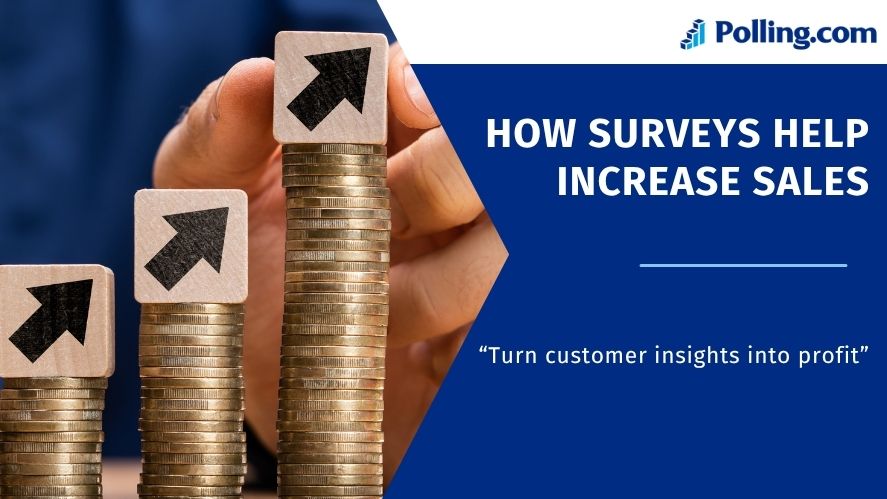
One of the clearest ways to answer the question “do surveys increase sales” is to look at how they influence conversion, retention, and referrals.
Let’s explore the specific ways surveys boost sales.
Improve Product or Service Fit
So, do surveys increase sales by improving your product fit? Absolutely. When customers explain what’s missing, fixing those gaps increases conversions.
For instance, a company might ask:
- “What almost stopped you from making a purchase?”
- “Is there anything missing from this product?”
These good survey questions uncover weaknesses you may have overlooked. Once you understand what’s preventing conversions, you can improve usability, messaging, pricing, or features.
As improvements are made, conversion rates rise naturally.
Segment and Personalize Offers
Companies that use segmentation based on surveys are actively proving that surveys increase sales by matching offers to customer needs.
Let’s say you ask:
- “What are you hoping to achieve with our service?”
- “Which feature matters most to you?”
Answers to these survey questions for marketing strategy can be used to personalize follow-ups. For example, someone focused on speed might receive messaging around fast delivery, while someone focused on value sees a savings offer.
Increased personalization often leads to higher open rates, better engagement, and more conversions. That’s why segmentation based on surveys is a high-leverage strategy.
Qualify Leads Through Pre-Sales Surveys
Not every visitor is sales-ready. However, many are willing to share helpful information if asked correctly.
By adding a short survey to your landing page or sign-up form, you can qualify leads early on. For example, you could ask:
- “What problem are you hoping to solve?”
- “When are you planning to make a purchase?”
These market research survey questions reveal buying intent. Your sales team can then focus on high-priority leads, while automation handles the rest.
As a result, sales cycles become shorter, and the chance of closing deals improves.
Boost Customer Retention and Loyalty
Another way to answer “do surveys increase sales” is by looking at how retention improves when issues are caught early through post-purchase feedback.
A simple post purchase survey asking:
- “How satisfied are you with your purchase?”
- “What could we do better?”
can catch issues before they turn into cancellations. Furthermore, if you act on that feedback and close the loop, customers feel heard.
This increases brand loyalty and makes buyers more likely to return. Over time, it improves customer lifetime value, which boosts overall revenue.
Encourage Word-of-Mouth and Referrals
Another way surveys increase sales is through improved referrals. Happy customers are often willing to spread the word, but they need a nudge.
Using an nps survey (Net Promoter Score) helps identify your brand promoters. The classic question is:
- “How likely are you to recommend us to a friend?”
Those who score 9 or 10 are highly likely to refer others. After the survey, you can offer referral rewards or simply ask them to leave a public review.
Additionally, when low nps survey questions uncover unhappy customers, you can reach out and repair the relationship before it damages your reputation.
In both cases, the result is more customer advocacy and more inbound leads.
Surveys as Soft Marketing Tools
Finally, surveys can act as gentle marketing tools. Instead of directly promoting a product, you ask questions that make users think about it.
Here’s how:
- Ask what features they would like to see in a new release
- Mention upcoming products in a “vote for your favorite” survey
- Use survey questions examples that educate while collecting data
This strategy raises awareness and builds anticipation without using pushy language.
When done right, surveys serve your audience and grow your business at the same time.
Best Practices for Surveys That Increase Sales
To get the most from your surveys, follow these essential practices. Not only do they improve participation, but they also boost the value of the data you collect.
Keep Surveys Short and Focused
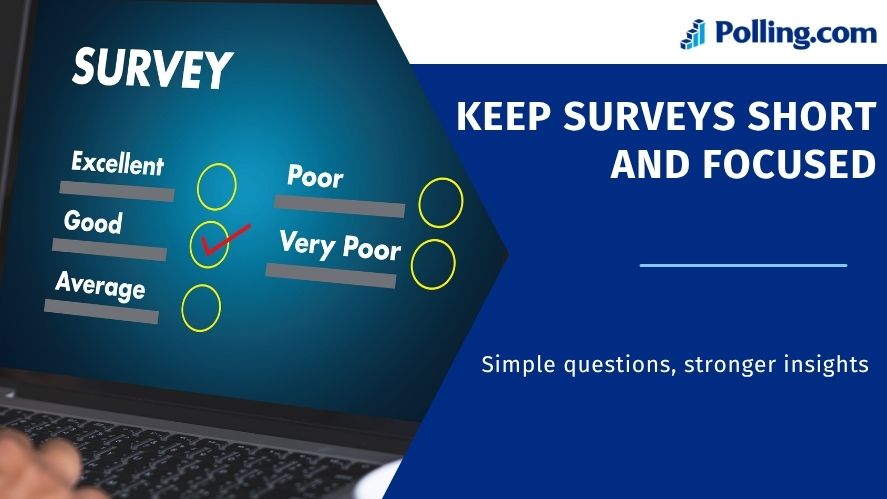
Always respect your customer’s time. Try to limit surveys to 5 to 10 questions. If possible, allow respondents to skip questions that aren’t relevant to them.
Shorter surveys are:
- Easier to complete
- Less likely to be abandoned
- More likely to generate high-quality data
Moreover, be clear about the purpose of the survey from the start. Transparency builds trust and encourages honest answers.
Ask the Right Types of Questions
To gather the best insights, combine multiple question types:
- Closed-ended questions (for quick answers and data analysis)
- Open-ended questions (for detailed feedback and discovery)
For example:
- “Which feature do you use the most?” (closed)
- “What would make this experience better?” (open)
When selecting questions to ask for surveys, focus on ones that reveal motivations, obstacles, or satisfaction levels. These are the most useful for improving conversion and retention.
Choose the Right Timing and Touchpoints
Timing plays a huge role in survey performance. If you send a survey at the wrong moment, it may be ignored or worse, frustrate the customer.
Instead, send surveys at high-impact moments:
- After purchase (for feedback)
- After product use (for usability insights)
- Before feature launches (for planning)
- After cancellations (to win customers back)
Each of these touchpoints offers a chance to collect meaningful feedback that can drive business improvements.
How Surveys Can Drive More Sales for Your Business
You’ve already seen how surveys help personalize offers, improve products, and increase conversions. However, creating a strong feedback process doesn’t stop at sending a few forms.
Let’s continue by exploring best practices that maximize survey effectiveness and how to measure their real-world results.
Use Incentives Responsibly
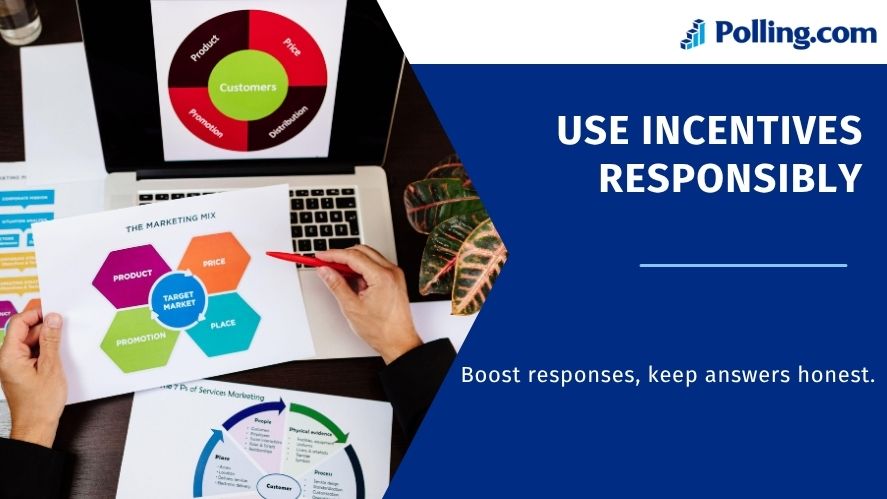
Offering an incentive can help boost survey response rates. However, it must be used with care. While rewards can motivate people to participate, they should never interfere with the quality or honesty of the answers.
Here’s how to use incentives wisely:
- Keep them relevant to your brand (e.g., discounts, loyalty points)
- Avoid overly generous gifts that may attract disengaged users
- Clearly explain how the incentive works
For example, you might offer a 10% discount code for completing a market research survey. This small gesture increases participation while keeping answers genuine.
Additionally, timing matters. Offering the reward after survey completion prevents people from speeding through without reading questions.
Used properly, incentives turn into a win-win: better response rates for you and a small value for the customer.
Close the Feedback Loop
Many businesses collect customer input but fail to respond to it. That’s a missed opportunity not just for improvement, but for building trust.
When customers take the time to answer your survey questions, they want to feel heard. Therefore, it’s important to act on that input and let them know.
Here are simple ways to close the loop:
- Email updates explaining improvements made based on feedback
- In-app messages thanking users for specific suggestions
- Public updates showing popular feature requests and your action plan
For example, if your nps survey questions reveal consistent complaints about support response time, take action and share what you changed.
This not only improves your service but also increases customer loyalty. When customers see that their voice matters, they are more likely to stay and buy again.
Stay Ethical and Transparent
As useful as surveys are, they must be executed with transparency and care. Customers are more privacy-conscious than ever, and trust is fragile.
To stay on the right side of both ethics and regulations:
- Be clear about the purpose of the survey
- Explain how the data will be used
- Get consent if collecting personal or sensitive information
- Avoid tricking users into a sales pitch disguised as research
For example, if you’re running an impact survey about a new product launch, state it clearly. Honesty builds trust. Deception leads to frustration and lost customers.
By being open about your intentions, you build credibility and create a more responsive audience over time.
Measuring the Sales Impact of Surveys
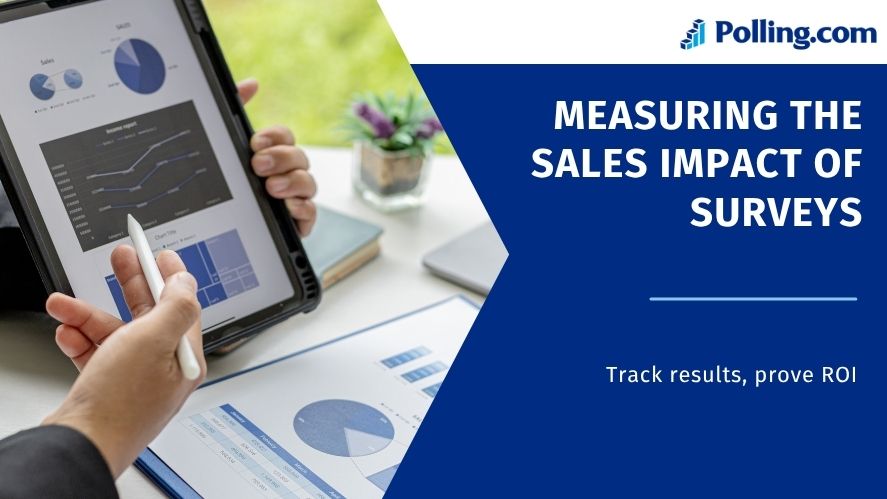
To fully understand how and why surveys increase sales, you need to track behavior, run A/B tests, and calculate ROI from the changes you implement.
Let’s explore how to measure that.
Track Conversion and Purchase Behavior
First, track how survey respondents behave compared to those who don’t respond.
Ask:
- Are they more likely to convert?
- Do they spend more?
- Are they more likely to return?
For example, after launching a market survey on your product pages, monitor metrics such as:
- Cart abandonment rates
- Purchase frequency
- Order size
Use tools like Google Analytics or CRM data to track these KPIs. A positive trend is an early sign of meaningful survey impact.
Use Control Groups and A/B Testing
To get solid proof that your surveys are influencing behavior, use A/B testing.
Divide your audience into two groups:
- Group A receives a survey at a specific point
- Group B continues without any survey
Then, compare the results:
- Did Group A show higher engagement or conversion?
- Were there differences in average order value?
This strategy removes guesswork and isolates the effect of the survey itself. You can even test different types of market research survey questions to learn which ones have the most impact.
Use this method regularly to refine and improve your survey strategy over time.
Calculate ROI of Survey Initiatives
To fully understand the value of your survey program, you’ll want to calculate the return on investment (ROI). It’s easier than it sounds.
Here’s a simple formula: (Revenue from improvements – survey cost) / survey cost
Let’s walk through an example.
You run a post purchase survey and discover customers are unhappy with shipping speed. You make improvements based on the data, which results in a 10% increase in repeat purchases over six months.
If the added revenue is $20,000 and the total cost of surveys and implementation is $4,000, your ROI would be: ($20,000 – $4,000) / $4,000 = 4.0
That’s a 400% return on your investment proof that listening to your customers pays off.
Real-Life Examples and Case Studies
These case studies give real-world answers to the question “do surveys increase sales” and the results speak for themselves.
SaaS Company Increases Conversion Through Onboarding Survey
A SaaS company noticed that many users signed up for trials but never completed onboarding.
They launched a simple survey questions popup asking:
- “What’s stopping you from getting started?”
Most users said they didn’t know where to begin.
Based on this feedback, the company added a short welcome tour and a checklist. As a result, trial-to-paid conversion rose by 15% within just a month.
E-commerce Business Boosts AOV Using Product Feedback

An online fashion retailer saw high page traffic, but low average order values (AOV).
They ran a market research survey asking:
- “What’s missing in our product options?”
Customers replied that they wanted more size variety and better product images. After implementing those suggestions, the business saw a 12% increase in AOV across several product lines.
This highlights how acting on specific feedback can unlock untapped revenue.
Service Company Saves At-Risk Clients Through NPS
A consulting firm sent quarterly nps surveys to its active clients.
When a long-time customer gave a low score, the team reached out within 24 hours. The issue? Delayed responses from the account manager.
The company apologized, re-assigned the client to a new rep, and offered a service credit. Not only did they save the account, but that client later referred two new customers.
Clearly, nps survey questions do more than measure loyalty they also create an opportunity to respond quickly and protect your reputation.
Techniques of Market Survey That Maximize Sales Outcomes
To wrap up, here are a few high-impact techniques that make your market survey strategy even more effective.
Define Specific Goals for Each Survey
Before launching a survey, ask yourself:
- What exactly do we want to learn?
- What business decision will this inform?
A vague survey leads to vague results. Therefore, every survey should have a purpose whether it’s improving a feature, validating a new offer, or boosting post-sale satisfaction.
Choose the Right Survey Type
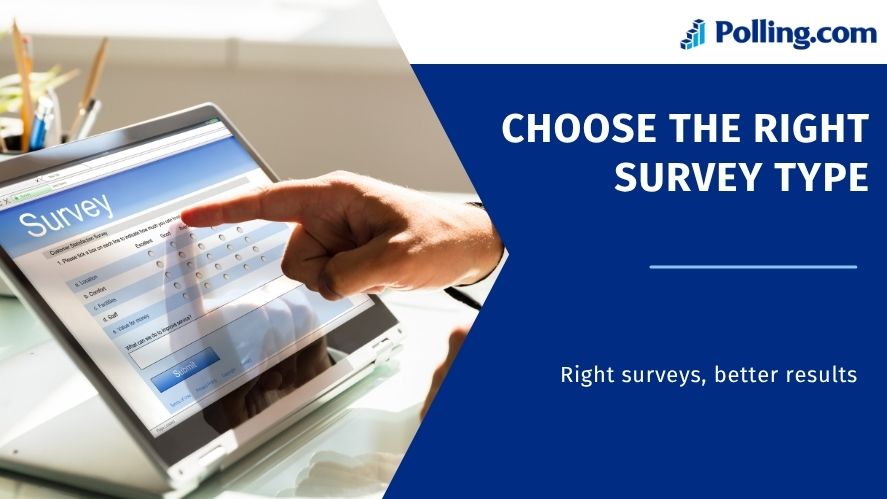
Match the survey type to your goal. For example:
- Use nps surveys to track loyalty
- Use impact surveys to evaluate new features
- Use market research survey questions to test new ideas
- Use post-purchase surveys to collect immediate feedback
By choosing the right type of survey, you make it easier to gather useful insights and act on them quickly.
Follow Up Based on Answers
Don’t let your surveys become dead ends. Instead, trigger follow-up actions based on what people say.
For instance:
- If someone gives a low satisfaction score, escalate it to support
- If someone expresses interest in a premium plan, send them a personalized offer
These automated follow-ups improve response and conversion rates. Over time, they create a powerful product feedback loop that drives continuous improvement.
Conclusion: Turn Feedback Into Sales Growth
So, do surveys increase sales? Yes they absolutely do, when used strategically.
Absolutely. When used with purpose, surveys are much more than a way to gather data. They are powerful tools for:
- Boosting conversions
- Personalizing offers
- Retaining customers
- Measuring business impact
They also help you avoid costly assumptions by delivering direct input from the people who matter most your customers.
Whether you’re a startup or a large brand, surveys should be part of your growth strategy.
Ready to grow smarter? Start collecting customer feedback with Polling.com. Try a free survey or explore customizable templates today.
